RAM function is dependent on Kapβ2-mediated nuclear entry
- PMID: 24200467
- PMCID: PMC3898117
- DOI: 10.1042/BJ20131359
RAM function is dependent on Kapβ2-mediated nuclear entry
Abstract
Eukaryotic gene expression is dependent on the modification of the first transcribed nucleotide of pre-mRNA by the addition of the 7-methylguanosine cap. The cap protects transcripts from exonucleases and recruits complexes which mediate transcription elongation, processing and translation initiation. The cap is synthesized by a series of reactions which link 7-methylguanosine to the first transcribed nucleotide via a 5' to 5' triphosphate bridge. In mammals, cap synthesis is catalysed by the sequential action of RNGTT (RNA guanylyltransferase and 5'-phosphatase) and RNMT (RNA guanine-7 methyltransferase), enzymes recruited to RNA pol II (polymerase II) during the early stages of transcription. We recently discovered that the mammalian cap methyltransferase is a heterodimer consisting of RNMT and the RNMT-activating subunit RAM (RNMT-activating mini-protein). RAM activates and stabilizes RNMT and thus is critical for cellular cap methylation and cell viability. In the present study we report that RNMT interacts with the N-terminal 45 amino acids of RAM, a domain necessary and sufficient for maximal RNMT activation. In contrast, smaller components of this RAM domain are sufficient to stabilize RNMT. RAM functions in the nucleus and we report that nuclear import of RAM is dependent on PY nuclear localization signals and Kapβ2 (karyopherin β2) nuclear transport protein.
Figures
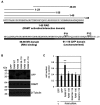
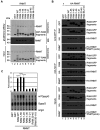

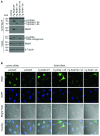
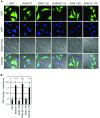
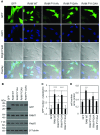
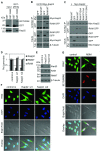

Similar articles
-
The RNA cap methyltransferases RNMT and CMTR1 co-ordinate gene expression during neural differentiation.Biochem Soc Trans. 2023 Jun 28;51(3):1131-1141. doi: 10.1042/BST20221154. Biochem Soc Trans. 2023. PMID: 37145036 Free PMC article. Review.
-
c-Myc co-ordinates mRNA cap methylation and ribosomal RNA production.Biochem J. 2017 Feb 1;474(3):377-384. doi: 10.1042/BCJ20160930. Epub 2016 Dec 1. Biochem J. 2017. PMID: 27934633 Free PMC article.
-
Mechanism of allosteric activation of human mRNA cap methyltransferase (RNMT) by RAM: insights from accelerated molecular dynamics simulations.Nucleic Acids Res. 2019 Sep 19;47(16):8675-8692. doi: 10.1093/nar/gkz613. Nucleic Acids Res. 2019. PMID: 31329932 Free PMC article.
-
Human cap methyltransferase (RNMT) N-terminal non-catalytic domain mediates recruitment to transcription initiation sites.Biochem J. 2013 Oct 1;455(1):67-73. doi: 10.1042/BJ20130378. Biochem J. 2013. PMID: 23863084 Free PMC article.
-
Regulation of mRNA capping in the cell cycle.RNA Biol. 2017 Jan 2;14(1):11-14. doi: 10.1080/15476286.2016.1251540. Epub 2016 Oct 28. RNA Biol. 2017. PMID: 27791484 Free PMC article. Review.
Cited by
-
RAM is upregulated during T cell activation and is required for RNA cap formation and gene expression.Discov Immunol. 2023 Nov 17;3(1):kyad021. doi: 10.1093/discim/kyad021. eCollection 2024. Discov Immunol. 2023. PMID: 38572449 Free PMC article.
-
Oncogenic PIK3CA mutations increase dependency on the mRNA cap methyltransferase, RNMT, in breast cancer cells.Open Biol. 2019 Apr 26;9(4):190052. doi: 10.1098/rsob.190052. Open Biol. 2019. PMID: 30991934 Free PMC article.
-
Molecular basis of RNA guanine-7 methyltransferase (RNMT) activation by RAM.Nucleic Acids Res. 2016 Dec 1;44(21):10423-10436. doi: 10.1093/nar/gkw637. Epub 2016 Jul 15. Nucleic Acids Res. 2016. PMID: 27422871 Free PMC article.
-
Characterisation of RNA guanine-7 methyltransferase (RNMT) using a small molecule approach.Biochem J. 2025 Feb 17;482(4):BCJ20240608. doi: 10.1042/BCJ20240608. Biochem J. 2025. PMID: 39869500 Free PMC article.
-
The RNA cap methyltransferases RNMT and CMTR1 co-ordinate gene expression during neural differentiation.Biochem Soc Trans. 2023 Jun 28;51(3):1131-1141. doi: 10.1042/BST20221154. Biochem Soc Trans. 2023. PMID: 37145036 Free PMC article. Review.
References
-
- Topisirovic I., Svitkin Y.V., Sonenberg N., Shatkin A.J. Cap and cap-binding proteins in the control of gene expression. Wiley Interdiscip. Rev. RNA. 2011;2:277–298. - PubMed
-
- Shatkin A.J. Capping of eucaryotic mRNAs. Cell. 1976;9:645–653. - PubMed
-
- Shuman S. What messenger RNA capping tells us about eukaryotic evolution. Nat. Rev. Mol. Cell Biol. 2002;3:619–625. - PubMed
-
- Li Y., Kiledjian M. Regulation of mRNA decapping. Wiley Interdiscip. Rev. RNA. 2010;1:253–265. - PubMed
Publication types
MeSH terms
Substances
Grants and funding
LinkOut - more resources
Full Text Sources
Other Literature Sources
Molecular Biology Databases
Miscellaneous

